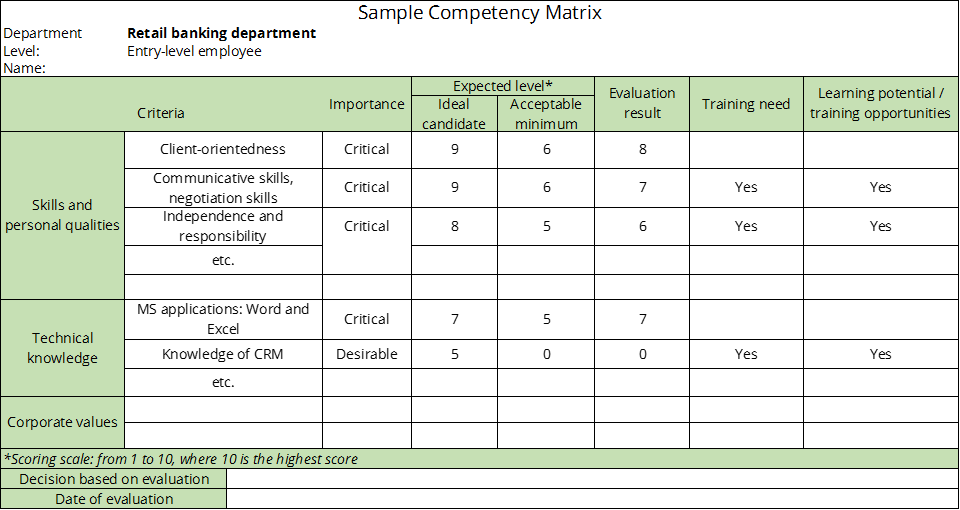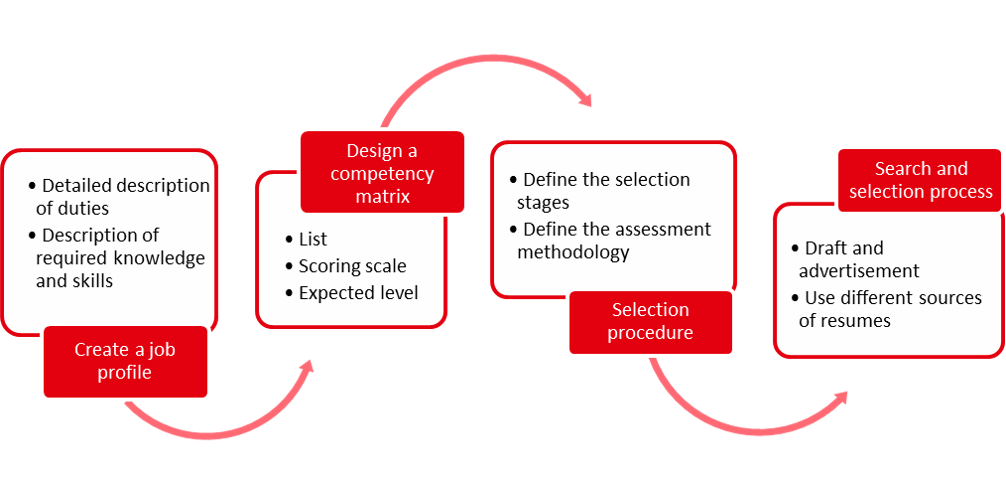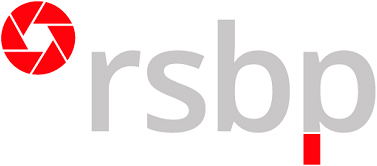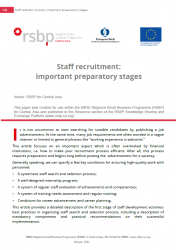It is not uncommon to start searching for suitable candidates by publishing a job advertisement. At the same time, many job requirements are often worded in a vague manner or limited to general phrases like "working experience is welcome."
This article focuses on an important aspect which is often overlooked by financial institutions, i.e. how to make your recruitment process efficient. After all, this process requires preparation and begins long before posting the advertisement for a vacancy.
Generally speaking, we can specify a few key conditions for ensuring high-quality work with personnel:
- A systematic staff search and selection process;
- A well-designed internship program;
- A system of regular staff evaluation of achievements and competencies;
- A system of training needs assessment and regular training;
- Conditions for career advancement and career planning.
This article provides a detailed description of the first stage of staff development activities: best practices in organizing staff search and selection process, including a description of mandatory components and practical recommendations on their successful implementation.
Importance of the preparatory stage
The importance of quality staff recruitment is difficult to overestimate. Hiring a candidate who cannot cope with assigned tasks due to a lack of necessary qualities and skills leads to significant losses of time and resources of an organization, as well as to lost opportunities.
To find the right employee, it is important to start with preparatory activities, not only focusing on formal requirements but on analyzing which candidate would be able to perform the tasks associated with a certain position. It is also necessary to create conditions for objective and prompt decision-making by elaborating clear selection stages and evaluation criteria for candidates.
It is important for the HR department of any institution to carry out preparatory work that will ensure the most effective process of finding suitable candidates and, most importantly, create conditions for hiring candidates who are most suitable for a concrete position.
As a result, due to targeted staff selection, a decrease in training costs may be expected, higher staff efficiency and lower staff turnover.
As in the case of any other process, for successful implementation of the staff selection process, it should be systematized and described in detail. This will lay the foundation for objective assessment and selection of the most suitable candidates for the specific task.
How should this process be organized according to global best practices?
Designing a job description/profile
As the first preparatory step in quality recruitment, it is recommended to develop a detailed job description for each existing position at a financial institution.
It is important to indicate the desired education or work experience as well as necessary, specific practical knowledge, skills, and qualities that a successful employee should have for a specific position.
A job profile for each position is prepared as a separate document which should include the following information:
- List of responsibilities in a specific position;
- Requirements to potential candidates;
- Proposed working conditions.
A table below outlines a sample structure of a job profile description.
|
Sample Job Description: Structure |
| (1) Purpose / role of the job |
| (2) Sphere of the main responsibilities |
| (3) Round of duties |
| a. Primary (core) duties |
| b. Secondary duties |
| (4) Requirements to the candidate: |
| a. Education / Working experience |
| b. Professional knowledge |
| c. Competencies (skilss, abilities, personal qualities) |
| (5) Working conditions and employee rights |
| a. Remunaration structure |
| b. Working time and vacation |
| c. Professional development plan |
| d. Evaluation of efficiency |
| e. Career advancement opportunities |
It is important to define clearly the primary and secondary duties for each position. For initial compilation of this list, it is useful to set up a working group including specialists of the HR department and the department to which this job belongs. You can start by defining the general tasks of the department and then indicate the functional duties of each employee of this department.
The more precise this list is, the easier it will be to find the right candidate for a concrete position. With a clear idea of what duties will be performed by an employee in a concrete position, it will be easier to proceed.
The next step is to determine the knowledge, skills, and personal qualities that an ideal candidate for this position should have. It is important to pay special attention to this item.
In the "Requirements to the candidate" item, employers often indicate formal requirements, such as higher education, computer skills. However, it is more efficient to select candidates by their personal qualities and professional skills. And there is a good reason for this.
- For example, even if a potential candidate for the arrears department is suitable in terms of education and comes with excellent recommendations but is not good at dealing with conflict situations, then s/he is not likely to cope with his/her duties in this job.
| Here are some of the skills that candidates must have to work at a financial institution |
|---|
|
It is easier to describe required skills by analyzing the list of daily tasks and match them with various competencies that are easily available in the public domain. As a next step, you should choose the most important skills for carrying out the daily tasks associated with a given position. You should also remember about secondary duties and add the respective skills to the list.
Another useful method of collecting the necessary competencies is to analyze the qualities of successful employees in this position in your organization.
Determining the required competencies is not an easy task, but by doing this you can significantly improve recruitment efficiency. Once you have completed the description of duties and requirements to potential candidates, you have the necessary basis for the next step.
Drafting a competency matrix
In this matrix you list all competencies required to perform the duties in a particular position. It is recommended to derive competencies from the competency list compiled for a given job profile and add them to the matrix, usually grouping them in personal qualities and technical skills. It is recommended to limit the list to the most indispensable competencies for each position. If the list is too long (more than 10 competencies), this will complicate assessment. Given that different positions are associated with different responsibilities and responsibility levels, the number of competencies on the lists for different positions may be different, depending on the complexity of each concrete position.
The next step is to define a measurement scale, for example, a scoring scale from 1 to 10 (where 10 is the highest score), or a scale of qualitative indicators: "Low - Medium - Above average - High", and, accordingly, indicate the proficiency level required for each skill for successful performance in a given position.
As a rule, a competency matrix is developed for a specific department and for each staff level: a specialist, a senior specialist and the department head. Accordingly, the expected level of proficiency for a particular skill will be indicated depending on the expected level of experience required for each position.
When defining the scale of expectations of an ideal employee, it is important to consider the degree of importance of each competency for the respective department.
- For example, employees of the Retail Department must have a high level of communication skills (9-10 of 10, based on the scoring scale mentioned above). As for candidates for positions in the Accounting Department, while communication skills are important for intra-team interaction, such candidates are not expected to have the highest level of communication skills.
At each of the stages described, it is important to avoid generalization. It is recommended that in your description, you indicate specific skills required by your institution.
For example, when it comes to credit risk specialists, they are expected to have a high level of analytical skills. This requirement can be specified as follows:
- Analytical skills: ability to process quickly large volumes of diverse information, identify the most important aspects, possible risks, draw independent conclusions and propose solutions.
Or, another sample description of communication skills expected from a loan officer:
- Communication skills: ease in communication with potential clients, ability to explain products/procedures correctly and in an understandable way, ability to collect effectively exhaustive information for credit and risk analysis, ability to handle objections, resolve conflict situations.
It is important to add management skills to descriptions of leadership positions. For example: initiative, planning skills (organizational or control skills), the ability to develop and motivate others. The presence of required management skills should be envisaged as a prerequisite for career advancement. In such cases, the development of these competencies will serve as an incentive for experienced employees with a prospect for promotion.
As an additional option, competences can be divided into critical (indispensable) and desirable. The first category includes qualities or skills that are absolutely necessary and without which high-quality performance of the functions described for a given position will be impossible or extremely difficult.
- An example of critical competencies: attention to detail for the position of an Accountant
It should be borne in mind that a competency matrix describes an ideal employee for a given position, and potential candidates may not necessarily have all the necessary qualities at the desired level. In this case, it is important to pay attention to the potential of candidates for developing a particular skill and available resources in your organization (for supporting candidates in developing needed skills). It is also recommended to pay attention to the readiness of candidates for further growth and their additional strengths that may (partially) compensate for the insufficient level of any of the required skills.
At the same time, if no candidate is found who meets the minimum set of critical competencies, it is recommended to avoid compromises and continue to search, because hiring an unsuitable candidate will usually have more negative consequences and will cost your institution more in terms of time and money than continuing to search for a more suitable candidate.
It should be remembered that not everyone is suited for any job, even if a lot of time and effort is invested in training. In most cases, employees who cannot cope with tasks due to a lack of necessary qualities become dissatisfied and unmotivated, which ultimately leads to unsatisfactory results and staff turnover.
There is a general recommendation for all financial institutions to start with a simple matrix. Over time, this matrix can be adjusted based on staff performance, staff evaluation and experience gained.
Once the competency matrix is ready, it makes an excellent basis for assessing potential candidates as well as evaluate current employees and identify areas for improvement. If staff evaluation shows that some employees lack necessary competencies, identified gaps serve as basis for developing an effective training plan.
There are many options for building such a matrix, and it is important to define a workable model for your institution. As an example, below is one of the possible structures.

Defining recruitment stages and an approach to candidate assessment
Based on the requirements for specific positions, it is worth considering the most optimal recruitment/selection stages for each position. It is important to describe the recruitment process, which includes clear steps, a system of evaluation and a passing score.
Possible recruitment stages include initial screening of CVs, selection of applicants who meet the criteria; general testing, filling out questionnaires; analyzing the results and selecting candidates for an interview; several stages of individual and/or group interviews; conducting specialized testing.
Each of these steps helps to identify different qualities of a potential candidate. By combining different stages with clearly described evaluation criteria, we significantly increase the efficiency and objectivity of the screening process.
It is worth determining selected stages to be applied to in-house candidates. It is also necessary to consider the job level and the selection periods. However, it is important to apply a competency matrix or a list of required competencies for experienced external candidates as well as for in-house candidates. Several years of work in a similar position do not guarantee the expected level of competence.
For interviews, you should prepare blocks of questions to determine the level of certain skills and experience. Accordingly, for an interview, blocks of questions are chosen depending on the required skills determined in the matrix or in the list of competencies required for a specific job. It is also recommended to include situational questions on the previous experience of an applicant.
Here is a possible list of questions to assess self-organization and time management:
- How does your day usually go? Do you plan it in advance?
- How do you prioritize your tasks for the day?
- What helps you with your planning of the day?
- What will you do if you need to fulfill several tasks at the same time?
- Tell us about your plans for the next month.
For convenience and systematization, it is helpful to develop a Candidate Evaluation Form for individual interviews. This can be easily done based on the matrix or list of required competencies.
Questionnaires are a good tool to identify competencies. Group interviews are especially useful for identifying personality types. To conduct them, it is also necessary to prepare questions for discussion and an assessment form in advance. It is also possible to include situational case studies and divide applicants into teams. For an interview, it is advisable to involve several employees since you will need a discussion moderator(s) and an observer(s). For the role of moderators, it is advisable to involve employees of the department for which the applicants are recruited, with support from an HR department specialist in the role of an observer.
It is important to select a proper location for a group interview. On the one hand, participants should feel comfortable to freely express their opinions, so it its preferable to avoid small confined spaces. On the other hand, staff of the financial institution observing the interview process should be able to clearly hear the opinion of each participant.
Depending on the job type, the list of qualities to be assessed will be different and will be selected based on the matrix or the required competencies list. It is important to develop a Candidate Evaluation Form for a group interview.
For example, for a group interview, the following assessment criteria can be included:
- First impression
- Ability to express ideas, communication skills
- Initiative, leadership qualities
- Ability to give arguments
- Ability to work in a team
This screening method is not applicable to all positions and usually used for situations involving many applications for a position. Group interviews are recommended as an efficient method when there are many candidates and competition is high. This method can also be used for evaluating final year students before graduation, in order to select the most talented candidates.
Testing, in turn, can be conducted either to test basic skills / general level of development of applicants, or the level of highly specialized professional knowledge. It is recommended to create an extensive database of possible questions and answer options in advance, to be able to compose different versions of tests without additional input of resources.
It is also important to define the testing procedures in advance, testing time, scoring method and to set the minimum passing score.
It is important to keep the results of initial assessment of selected candidates, in particular, their completed competency matrixes, as this is the starting point of an employee’ further development path.
It is possible to recruit applicants without the expected experience, with only partial technical knowledge, but always with a set of necessary personal qualities. It is recommended to pay close attention to how a candidate fits the job profile, because it is much easier to teach technical knowledge to a person than to change his/her personality.
An in-house professional training system is a good way out. Think in advance of the type of training you can offer to trainees to develop their most important competencies. Depending on the level of the selected candidate, an internship plan is drafted, a teaching method is selected with a list of topics and materials prepared in advance.
Job advertising and searching for candidates
The final stage of the preparation process is the drafting of a job advertisement.
It is important to provide a description of future responsibilities based on the job profile and the main competencies expected. A candidate must clearly understand what functions s/he is to perform.
It is also important to use various media for posting a job advertisement, not just the official website of your organization. Searching for candidates within and outside your organization expands your choice. The wider the outreach of your ad, the more chances that your ideal candidate will notice it. One of the general success factors is to make every effort to ensure that there are enough potential candidates to be able to choose from the best on the market.
It is important to indicate different ways for candidates to submit their resumes and to ensure that none are left without attention or lost in the process. It is recommended to create a positive impression of your organization from the very first contact with applicants by providing all required information and communicate professionally and politely with each applicant.
In conclusion, we present a scheme for organizing the staff selection process based on best practices.

Once you have done this preparatory work and applied the developed criteria in practice, you have a basis for optimizing the process, for a systematic and transparent approach as well as for equal treatment of all evaluated candidates. As a result, the best and most suitable candidates will be selected for long-term work for the benefit of your financial institution. Well selected employees able to fulfill their tasks are the key to higher efficiency, productivity and motivation at lower cost.



